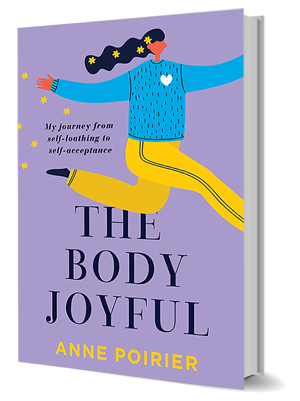What’s one thing I know for sure? That repetition and consistency — especially in the beginning stages of creating new healthy habits — are key.
It’s so easy for our brains to say… “Well, just one bite won’t hurt. Or one more puff, one more sip, one more smack of the snooze alarm…”.
For both myself and my clients, there are a few key healthy habits that can help start the ball rolling. Before long, you can be feeling better in your body and improving your relationship with food and eating.
So, pick up your fork, and let’s dive in.
Habit One: Eat slowly and consistently.
Eating slowly and taking time to enjoy your meals is a key habit to establish.
It takes patience and time to develop this skill, especially in today’s hectic day and age! But it can be practiced and done anywhere, anytime, and with any food.
Here’s how:
- Start by just noticing the speed at which you eat right now, and how this tempo may affect what and how much you eat.
- Pick a meal to try some slow-down techniques. Slowing down and being deliberate about eating inevitably leads to eating less and being more mindful with your food.
- Place your fork down between bites.
- Take a deep, cleansing breath and check in with your body a few times during your meal.
- Set a timer to act as a speed bump. For example, eat ¼ of your meal and then simply set the timer and sit for 2 minutes before proceeding.
Eating consistently:
It’s also important to eat at regular intervals. Why? Eating at regular intervals throughout the day helps maintain blood sugar levels, regulates hormone delivery, and keeps your energy up.
Finding out what intervals of eating your body works best at is the first step. Does your body start to drag and your mind start to wander two, three or even four hours after eating? Take some time this week to pause long enough to notice when your body starts asking to be nourished.
Next, determine what timing of meals works best with your schedule. If you have meetings or calls most days at 1 p.m., that would not be a great time to be ready for lunch. Experiment with what meal timing might work best with your schedule.
Habit Two: Connect with your true physical hunger.
Connecting with your true physical hunger includes appetite, fullness, and satisfaction (intuitive eating).
This habit starts with connecting with how your body tells you it is hungry. Becoming aware of your own personal body’s physical hunger cues can be tricky at first.
I know for me, I only knew starving and overly full—nothing in between.
Check in with yourself and ask:
Does your stomach growl? Do you feel lightheaded or dizzy? Does your mood shift to hangry?
Intuitive eating starts with:
- Noticing and naming your physical hunger. This provides you with a connection to yourself, and a baseline for practicing this habit.
- Eating when the body asks to be fed. This honors your body’s natural needs, which in turn can build body confidence and appreciation.
- Pausing and honoring your body’s natural fullness.
A good way to honor your bodies fullness is to eat until you’re about 80 percent full. By following healthy habit number one (eating slowly), this becomes easier to notice.
You’ll be able to determine the signals your body shares with you when you have had enough to eat. Do you start to feel sick? Does your stomach just say enough? Is it your mind that tells you to stop? Is it that there is no food left on the plate that signals you to be finished?
Finding your comfortable fullness takes some experimentation, and involves finding satisfaction in foods.
Here’s what I mean.
Think about sitting in a restaurant looking at the menu. You see two different foods that get your attention.
Meal one is the one you “probably should order” because it will be “good” for you.
Meal two is the one that caught your attention right off the bat, because it sounds absolutely delicious…but attached to the food is “I shouldn’t really get that, it is too fattening (or has too many calories).”
By picking meal one, you have a much greater chance of coming home “hungry” and foraging for food in the fridge or cabinets because the meal left you unsatisfied. Deep down you really wanted meal two.
Learning to honor your hunger, respect your fullness, and choose satisfying foods (most of the time) are sustainable and rewarding ways to consistently fuel your body and develop a trusting friendship with food… More on that here.
Habit Three: Eating high quality, nutrient dense foods while hydrating consistently.
All foods fit on along a continuum. At one end, there are highly processed foods, and on the other end are fresh-from-the-farm foods, and everything in between.
Practice choosing foods that fall somewhere in the middle, to support your body in running efficiently and effectively.
You should also keep in mind that we have three macronutrients to consider on this journey:
-
-
- Protein: This is the building block of the body, necessary in metabolic reactions and aiding in satiety (feeling fuller longer). Are you eating protein at any of your meals? Most of your meals? Can you nudge yourself to eating lean protein one more time a day than you do now?
- Carbohydrates: These provide quick energy, added micronutrients and fiber for satiety and digestion. How many fruits and vegetables do you eat during the day? Can you add one more? How about another? Eating five or more is our goal. Adding one more at a time. Other energy, fiber and nutrient-rich carbohydrates (in addition to the five servings of fruit and veggies) include beans and whole grains such as quinoa, wild rice, buckwheat.
- Fats: Fats help regulate appetite, make food taste good, and help regulate hormone absorption. What type of fats are classified as nutrient dense? Things like avocados, olive and coconut oil, fatty fish (salmon, mackerel, sardines), and nuts and seeds. What type of fats do you eat currently? Adding one or two of these to your daily intake helps nudge the nutrient needle.
-
To summarize the third of the healthy habits, begin to choose foods that taste good and feel good in your body after you eat them. These foods will also provide you with the nutrients to have the necessary focus and energy for your day.
This habit is not about “all or nothing thinking” (eating all foods from one end or the other of the spectrum). Instead, it’s about nudging the needle towards more nutrient-dense foods and meals.
To recap our three healthy habits to improve your relationship with yourself, food, and your body:
- Work on listening to your physiological cues for hunger and fullness and practicing intuitive eating.
- Slow down your eating.
- Eat consistently.
- Choose higher-quality, nutrient-dense foods on a more regular basis.
- Pick foods that fuel your body’s physical, emotional and energetic needs.
These habits will help you develop a consistent, sustainable relationship with food—one that feels good, tastes good, and energizes you.
As a bonus, here are a few more healthy habits we find the most important at Shaping Perspectives:
- Create a sleep routine to address rising cortisol levels due to stress.
- Move, play and exercise joyfully. Read more about that here.
- Pause and make time for self-care. Here’s how.
- Plan, prep, and learn to cook.
Want some guidance on turning your current relationship with food and your body around? Schedule a Complementary Clarity Conversation today.
If you enjoyed this article, you won’t want to miss these either:
Benefits to a Playful Approach to Exercise
Building Your Own Self-Care Toolbox
9 Steps to Ultimate Self-Acceptance


